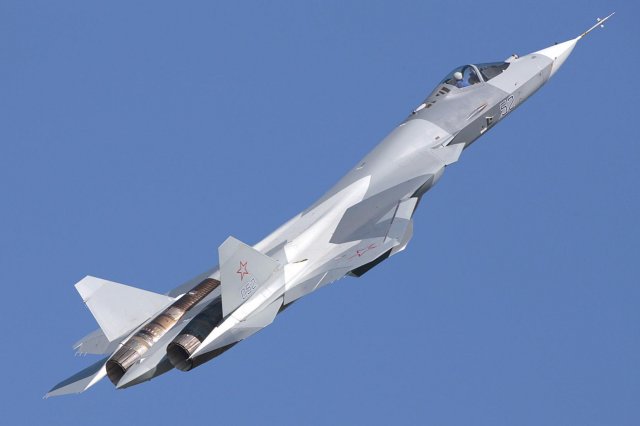| a | |||
|
|
|||
|
World Defense & Security News - Russia
|
|||
|
|
|||
|
Russia to test-fly PAK FA fighter powered with Phase II engine in late 2017
|
|||
|
The first flight of the Russian fifth-generation fighter (Russian acronym - PAK FA) powered by the Phase II engine is slated for late 2017, Yevgeny Marchukov, general designer/director, Lyulka Design Bureau (an affiliate of the Ufa Engine Production Association, UMPO), told TASS on Thursday, March 10, 2016.
|
|||
|
|
|||
 RuAF Sukhoi T-50 PAK FA fighter jet RuAF Sukhoi T-50 PAK FA fighter jet |
|||
|
|
|||
|
"If all goes to plan, the Phase II engine’s fight flight on the flying testbed will take place late in 2017, with a T-50 (PAKFA) prototype to act as flying testbed," the general designer said.
"One of the flying testbed’s engine nacelles will house a Phase I engine and the other the advanced one," he added. According to Marchukov, the Phase II engine is in the prototype manufacture, demonstrator assembly and core engine test stages. The first core engine has been tested, with good enough results produced. The second core engine’s assembly is nearing the end. "We will test the engine demonstrator this summer," Marchukov said. The general designer emphasized: "The Phase II engine designed for the PAK FA is a Generation 5+ design, even a Generation 5++ one." The engine is 15-20% superior to the previous ones in terms of specific characteristics. "The engine’s characteristics have been refined through a sharp improvement in the operating cycle parameters, efficiency of units and introduction of advanced technologies and materials in the first place. It features higher thrust and a sizeable reduction in specific fuel consumption in virtually all operating modes, i.e. not only in the cruising range mode, but in the acceleration and afterburning modes as well - the modes the aircraft is normally flown in. This implies a life cycle cost reduction," the general designer explained. "In addition, a hefty specific weight reduction through advanced technologies and materials has been planned." According to Marchukov, "there have been difficulties in the development of the advanced engine, because not all of the materials have been certificated, and we may not use them for now. Therefore, the early prototypes will be somewhat different to the ones used in the official trials. We are working on the powerplant in cooperation with the plane’s designers, including the work on the air intake, because it is an all-new engine designed to remain in service for 30 years at the least." "We plan to use the advanced engine’s core engine to derive a whole spectrum of advanced powerplants for aviation and power generation applications," the general designer concluded. |
|||
|
|
|||
|
© Copyright 2015 TASS. All rights reserved. This material may not be published, broadcast, rewritten or redistributed.
|
|||
















